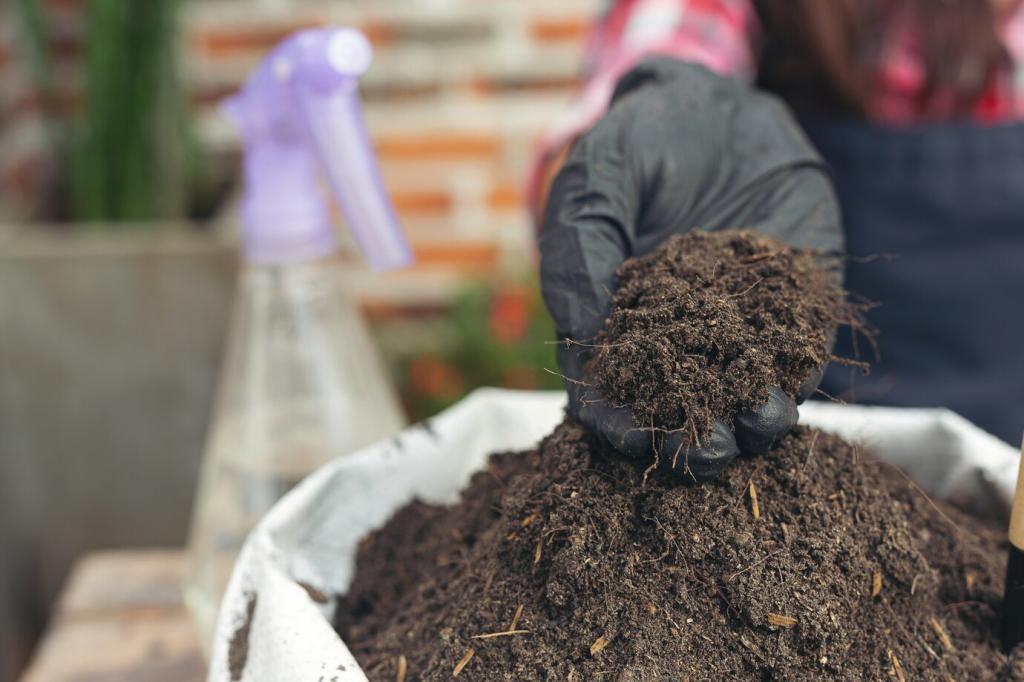Harvesting and Using Balcony Compost
Finished compost smells earthy, looks dark and crumbly, and shows few recognizable bits. In worm bins, harvest from trays the worms have left behind. With bokashi, complete the soil phase before use. Tell us how you test doneness and what plants respond first to your balcony compost.
Harvesting and Using Balcony Compost
Blend a modest portion of finished compost into potting mix to enhance moisture retention and microbial life. Sift if needed for cleaner texture in small pots. Top-dress heavy feeders like tomatoes or peppers. Share your favorite compost-to-mix ratio for balcony herbs, flowers, and compact vegetables.





